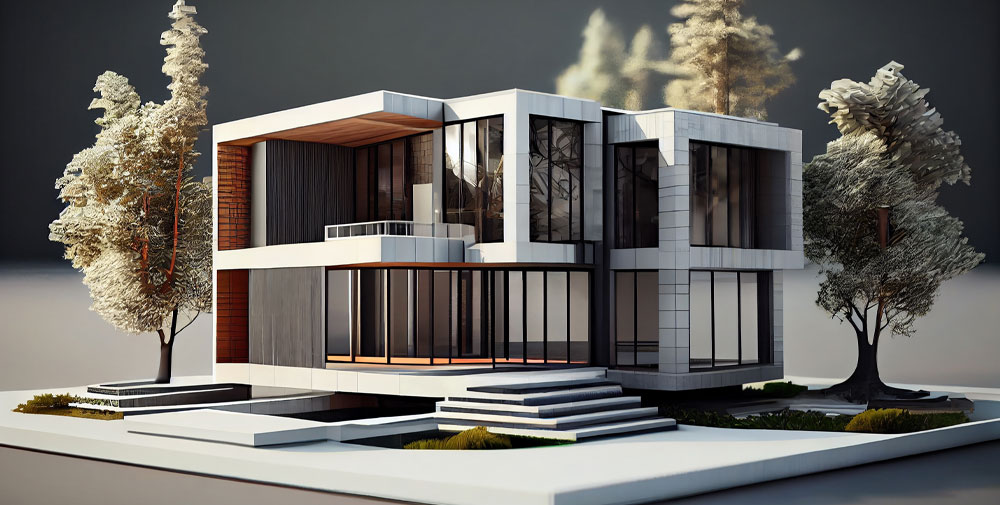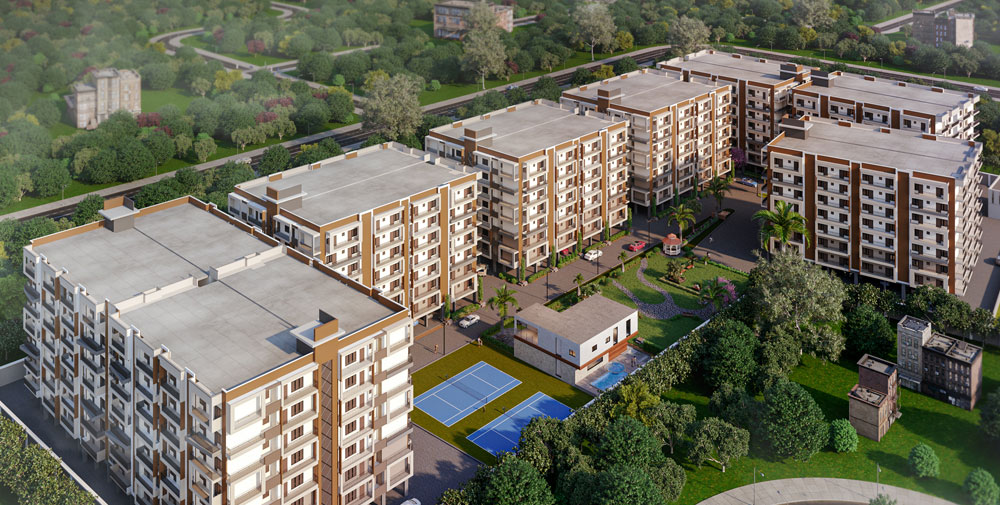When it comes to architectural projects, visualization plays a crucial role in conveying design concepts and bringing ideas to life. In recent years, outsourcing 3D visualization, particularly architectural rendering, has become a popular choice for many firms and professionals. But what exactly does outsource entail, and how can it benefit your projects? Let’s delve into the details.
Table of Contents
WHY OUTSOURCE 3D VISUALIZATION?
Outsourcing 3D rendering offers numerous advantages, including cost savings, access to specialized expertise, scalability, and improved project efficiency. By partnering with a reputable rendering studio, you can leverage their skills and resources to enhance the quality and realism of your architectural visualizations.
Here are some points highlighting the reasons to outsource 3D rendering
- Access to Specialized Expertise: Outsourcing 3D rendering allows you to tap into the expertise of skilled professionals who specialize in 3D visualization. These experts possess in-depth knowledge of industry-standard software, rendering techniques, and design principles, enabling them to create photorealistic visualizations that effectively communicate your architectural concepts.
- Cost-Effectiveness: By outsourcing 3D rendering, you can avoid the significant upfront costs associated with purchasing expensive rendering software and hardware. Instead, you pay for the rendering services on a project-by-project basis, allowing for greater flexibility and cost control. This cost-effective approach is particularly beneficial for smaller architectural firms or individual designers with limited resources.
- Time Savings: Outsourcing 3D rendering frees up valuable time and resources, allowing you to focus on core aspects of your architectural projects. Rather than spending hours on rendering tasks, you can delegate these responsibilities to external rendering studios, who can deliver high-quality visualizations within your specified timeframe. This accelerated workflow enhances project efficiency and enables you to meet tight deadlines more effectively.
- Scalability: Outsourcing 3D visualization offers scalability to accommodate fluctuations in workload and project demands. Whether you require a single rendering or a series of visualizations for a large-scale architectural project, rendering studios can scale their resources accordingly to meet your needs. This scalability ensures that you have access to the necessary expertise and capacity, regardless of the size or complexity of your projects.
- Quality Assurance: Reputable rendering studios prioritize quality assurance throughout the rendering process, ensuring that the final visualizations meet your standards of excellence. By leveraging their expertise and rigorous quality control measures, you can expect to receive visually stunning and technically accurate renderings that showcase your architectural designs in the best possible light. This commitment to quality enhances the overall impact and credibility of your visualizations, fostering greater client satisfaction and stakeholder engagement.
- Focus on Core Competencies: Outsourcing 3D rendering allows you to focus on your core competencies, such as design innovation, client collaboration, and project management. By delegating rendering tasks to external experts, you can allocate your time and energy towards activities that align with your strengths and strategic objectives. This focus on core competencies enhances your overall productivity and competitiveness in the architectural industry, enabling you to deliver exceptional value to your clients and stakeholders.
Read this also: Why Use 3D Animation for Real Estate?
Read this also: How Do 3D Walkthrough Animations Benefit the Construction Industry?

HOW TO OUTSOURCE 3D ARCHITECTURAL RENDERING
Decide the Project You Want to Outsource: Begin by identifying the specific architectural projects or visualizations that you intend to outsource. Whether it’s interior renderings, exterior visualizations, or walkthrough animations, clarify your requirements upfront.
Lookup Outsource Rendering Studios: Conduct thorough research to find reputable rendering studios with a proven track record in architectural 3D rendering. Look for testimonials, portfolio samples, and client reviews to assess their capabilities and reliability.
Ask for a Scope of Work: Request a detailed scope of work from the rendering studio, outlining the deliverables, timeline, and any specific requirements or preferences you may have.
Determine the Price and Time to Complete the Work: Obtain transparent pricing information and discuss the estimated turnaround time for your project. Ensure that the pricing structure aligns with your budget and project timeline.
Discuss NDA and Other Protections: Prioritize confidentiality and intellectual property protection by establishing a non-disclosure agreement (NDA) with the rendering studio. This legal agreement safeguards your proprietary information and ensures that your designs remain confidential.
Enquire About Quality Control: Inquire about the rendering studio’s quality control processes and procedures. Emphasize the importance of achieving high-quality visualizations that accurately reflect your design intent and specifications.
Monitor Workflow and Communicate with 3D Artists: Stay actively involved throughout the rendering process, providing feedback, clarifications, and approvals as needed. Maintain open lines of communication with the 3D artists to address any questions or concerns promptly.
Checkout Ongoing Results and Request Modifications: Review the ongoing progress of your renderings and request revisions or modifications as necessary. Collaborate closely with the rendering studio to ensure that the final 3D visualizations meet your expectations.
Approve the Final Only When You Are Ready to Sign the Act of Completion: Take your time to thoroughly evaluate the final renderings before giving your approval. Once you are satisfied with the results, sign off on the project completion and proceed with the next steps.
Keep in Touch with the Company: Maintain a positive relationship with the rendering studio even after the project is completed. This fosters future collaboration opportunities and ensures ongoing support for your visualization needs.
Provide Clear Feedback: Offer constructive feedback throughout the rendering process, highlighting areas for improvement or adjustment. Clear communication helps streamline the workflow and ensures that the final deliverables meet your vision.
BENEFITS OF OUTSOURCING 3D RENDERING
It Saves Money: Outsourcing 3D rendering can be a cost-effective solution compared to hiring in-house talent or investing in expensive software and hardware.
You Get High Quality: Rendering studios employ skilled professionals and utilize advanced technologies to produce high-quality visualizations with stunning realism and detail.
You Save Time: By outsourcing rendering tasks, you can free up valuable time and resources to focus on other aspects of your architectural projects, leading to faster project completion and delivery.
Your Data is Secure: Reputable rendering studios adhere to strict security protocols to protect your sensitive data and intellectual property, giving you peace of mind.
CONCLUSION
In conclusion, outsourcing 3D architectural rendering offers numerous benefits for architectural firms, designers, and professionals seeking to enhance their visualization capabilities. By following the outlined steps and partnering with a trusted rendering studio, you can streamline your workflow, improve project efficiency, and achieve stunning visualizations that captivate clients and stakeholders alike.




